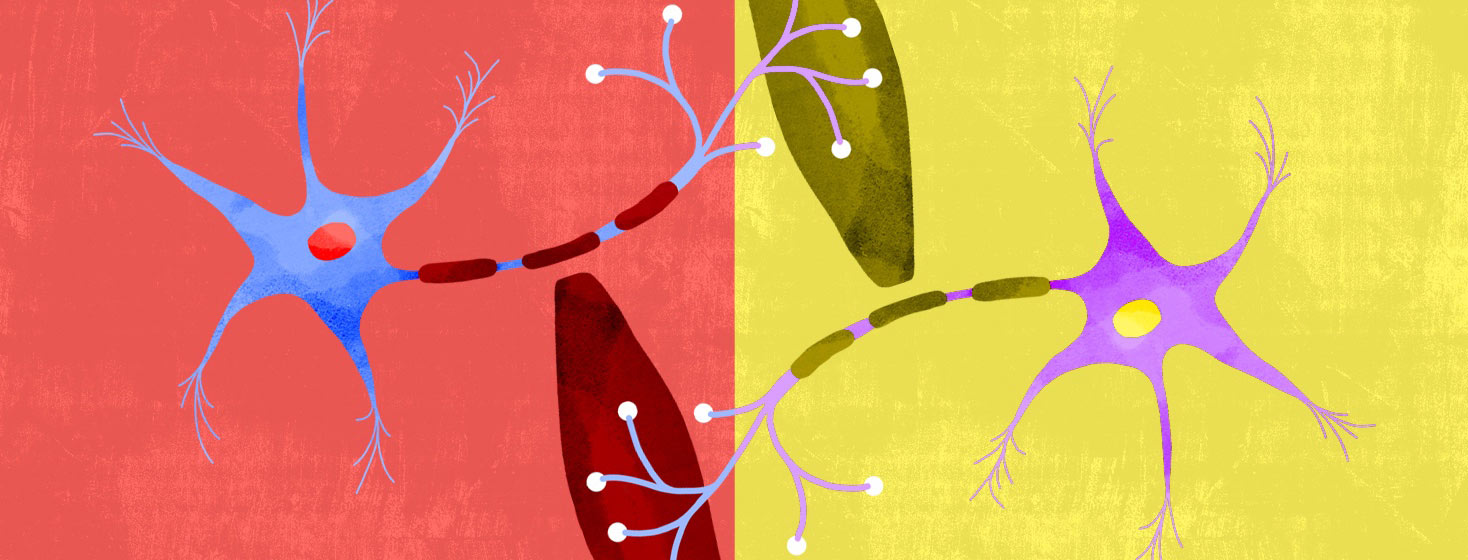Symptoms of Lambert-Eaton Myasthenic Syndrome Versus MG
Myasthenia gravis (MG) and Lambert-Eaton myasthenic syndrome (LEMS) are autoimmune conditions. This means the immune system attacks your own healthy cells. Both conditions involve the immune system interfering with nerves communicating to muscles. This leads to muscle weakness and fatigue in both conditions. However, they are different conditions with different causes and symptoms.1
MG is much more common than LEMS. This is why some people with LEMS may be incorrectly diagnosed with MG. Knowing the difference between symptoms can help obtain the correct diagnosis earlier. This can help you get the best treatment.2
What is Lambert-Eaton myasthenic syndrome (LEMS)?
LEMS is a very rare autoimmune condition. About 3,000 people in the United States have it.3,4
In LEMS, the immune system attacks the neuromuscular junction. This is where the nerve cells in charge of movement (motor neurons) contact your muscles. Antibodies in your immune system attack calcium channels in this area. This reduces the release of the neurotransmitter acetylcholine. Your muscles then cannot get fully activated. This leads to muscle weakness.2,3,5
Who is likely to have LEMS?
There are 2 possible scenarios with LEMS: About 3 out of 5 people with LEMS also have small cell lung cancer (SCLC). When this is the case, it is believed the immune system mistakenly attacks nerve cells when trying to attack the cancer. Symptoms of LEMS usually start before the SCLC diagnosis. About 3 percent of people with SCLC develop LEMS.2,3,5
Men over 60 years old with a history of smoking are the most likely to have both LEMS and SCLC.2,3,5
The other 2 out of every 5 people with LEMS often do not have cancer. This type of LEMS usually develops when the person is around 35 years old. Personal or family history of autoimmune conditions increases the risk.2,3,5
LEMS is extremely rare in children. Only 11 children with LEMS have been reported.2,3,5
How are symptoms of MG and LEMS similar?
MG is almost 50 times more common than LEMS. This is why many doctors first suspect MG based on symptoms. More than 1 out of 3 people with LEMS are first diagnosed with MG.1,2
The main symptoms of MG and LEMS are muscle weakness and fatigue. Muscle weakness can involve many parts of the body. It can lead to:2,6,7
- Trouble walking
- Difficulty using your hands and arms
- Difficulty speaking, swallowing, or chewing
- Stiffness
MG and LEMS can also cause eye-related symptoms due to weakness in eye muscles, such as:3,7
- Droopy eyelids (ptosis)
- Double vision (diplopia)
- Dry eyes
How are symptoms of MG and LEMS different?
A big difference between MG and LEMS involves the eyes. Eye muscle weakness in LEMS is usually milder. It is never the first or only symptom of LEMS. Eye weakness is the first symptom for 3 out of 5 people with MG. And it is the only symptom for 1 out of 4 people with MG.8,9
Muscle weakness is usually symmetric in LEMS. This means it affects each side of the body the same way. In MG, muscle weakness can be different from 1 side of the body to the other (asymmetric), particularly in the eye muscles.1
In almost everyone with LEMS, muscle weakness starts in the upper legs. It can then affect muscles in the shoulders, hands, feet, and throat. By contrast, muscle weakness starts in the upper legs for only 12 percent of people with MG. Also, severe weakness in the breathing muscles is less common with LEMS than with MG.2,8,9
Symptoms of LEMS that are not symptoms of MG include:2,3,6
- Transient improvement in strength with exercise/muscle use
- Absence of reflexes such as the knee-jerk reaction (areflexia)
- Return of reflexes after repeated muscle contraction
- Dry mouth
- Decreased sweating
- Erectile dysfunction
- Difficulty peeing, constipation
How can doctors tell whether I have LEMS or MG?
Doctors diagnose LEMS based on your health history, a neurological exam, and certain tests. The results of these tests help your doctor tell the difference between LEMS and MG.2
Your doctor may test your blood for antibodies that attack calcium channels. These are different from the antibodies seen in people with MG. A test called electromyography can show your doctor how well your nerves talk to your muscles. This test can differentiate between LEMS and MG. Your doctor may also take CT or MRI scans of your chest to look for SCLC if they suspect LEMS.1,2
How is LEMS treated differently than MG?
Treatment for LEMS depends on whether you also have SCLC. Treating the underlying cancer can help treat LEMS. Cancer treatment can include chemotherapy, radiation, or surgery. The best treatment option for you depends on many personal factors.2,6
Treatment for LEMS also includes medicine to relieve symptoms. These drugs increase the amount of acetylcholine at the neuromuscular junction. The most effective is Firdapse® (amifampridine). Firdapse is not a common treatment for MG. Another option is Mestinon® (pyridostigmine). This may treat LEMS, but is more effective for MG.2,6
Treatment for LEMS may include immune-modulating treatments. These can reduce the activity of your immune system. For example, your doctor may suggest an immunosuppressant, such as prednisone.2,6

Join the conversation